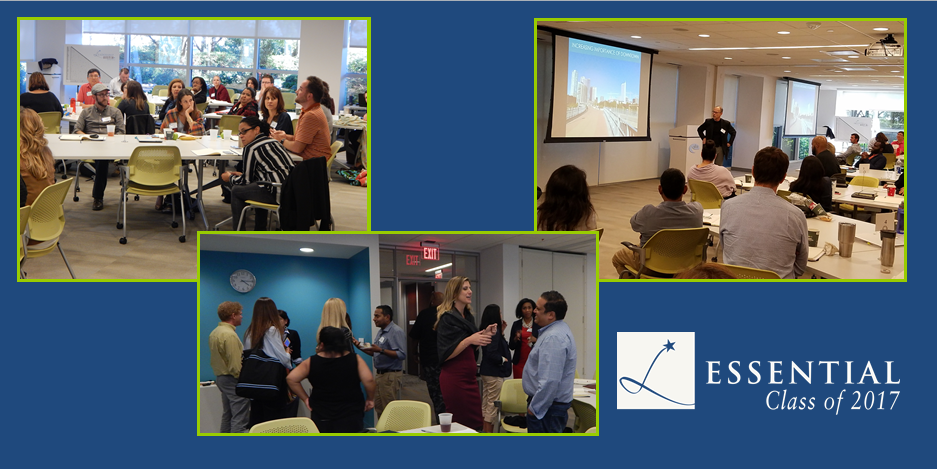
Guest post from Essential Class of 2017 participant Sameer Shah, Vice President of Marketing, Smart Flour Foods.
Austin’s economic opportunities and problems came into sharp focus for me at our #BCE2017 second class. My general thinking about Austin’s economy was limited to the tech industry, venture capital, and most recently Austin’s burgeoning food scene. I vaguely knew that gentrification was impacting old neighborhoods and forcing longtime residents out, but I had no idea of the level of poverty that exists in parts of our city. I was ignorant to the scale of the income and employment disparities between whites and those of color, and between those with degrees and those without.
The class zeroed in on the big picture answer to solving these problems: Education. Our broad ranging conversation covered topics from improving secondary education to increasing access to college. Of all that we discussed, I think that developing a viable path to the skilled trades has the best potential for short term impact. As the data illustrated, trades offer good paying, high demand jobs that can often be filled after a relatively short training period. Careers in skilled trades also develop long term residents who are engaged and involved in the local communities they serve.
Another aspect of the class that made an impact was Jon Roberts’s quantification of “the Austin Model.” I had never seen the concept presented as holistically as he did, noting elements from an innovation focus to a vibrant downtown. As he pointed out, we must nurture our tech roots and continue the public/private partnerships that have made technology such an important economic backbone. I also think we should look at other industries where we can replicate that model. Joining a food startup in 2014 after a sole focus on tech, I’ve noticed key similarities between the current food industry and the early days of tech in Austin. Both thrive based on a knowledge-sharing culture, significant venture investment and incubator activity and dynamic career opportunities that together drive impressive business/financial successes. As community leaders we should continually search for other industries where we can apply the Austin model, thereby broadening and diversifying the opportunities our city offers.
Continuing that theme of the Austin model, this class reinforced my belief that it is imperative to maintain and foster our distinct Austin culture in the face of the rapid growth and change we’re experiencing. Some combination of intangibles drives people and companies here and makes Austin such a coveted destination. There is a reason, far beyond the tax incentives that any city can offer, why companies like Google, Facebook, Amazon, Oracle, and others are basing significant offices in Austin. In that context slogans like “Keep Austin Weird” take on a new importance, and we need to work to maintain Austin’s uniqueness. Initiatives like the Mayor’s proposed Music Incubator, designed to preserve Austin as the live music capital of the world, look like steps in the right direction. What else can we do?
NOTE: The opinions of Leadership Austin alumni, faculty members, and guest bloggers are their own, and do not represent an official position of the organization.

